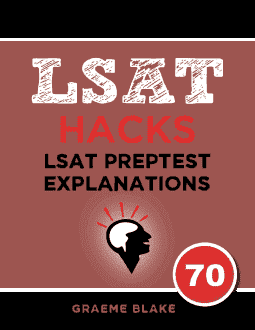If you’re like most LSAT students, I’ll bet you hate rule substitution questions. If I told you they don’t have to be hard, would you believe me?
The trick is to look at the full effect of a rule, and describe it another way. Let’s look at what we know about X:

X comes after Z, V and W. X also comes after Y, because Y has to be in one of the first three places, and X already has three people in front.
So Z, V, W and Y comes before X. Only U could come after X. That’s the full extent of the rule.
And now that’s we’ve looked at the full extent of the rule, it’s obvious that A is CORRECT.
You can also answer these questions by elimination. An answer is wrong if it allows something that shouldn’t be allowed, or if it prevents something that normally would be allowed.
B is wrong because it puts V before W. Normally, it’s possible for W to go before V.
C is wrong because it leaves out Z. With the rule in this answer, it would be possible for Z to go after X.
D is wrong because it allows Z to go after X. For example, this order is normally illegal, but it would be allowed with this rule:

That diagram also proves that E wrong. E allows Z to be after X as long as X is in five. That is different from the normal rules.


I don’t know how people write testimonials for your site, but if you ever want or need I’d be so happy to provide one. Your explanations have been immensely helpful in raising my score and finally making my breakthrough with LG! I never had too much difficulty with LR or RC – although using Spreeder definitely gave me the leg-up I needed to finish the RC section comfortably. LG was definitely my weak section, I could not finish in time to save my life! I truly believe that your explanations helped me get there though. The last few practice tests I’ve done I comfortably finish the section with a perfect score and time to spare. Thank you thank you thank you!